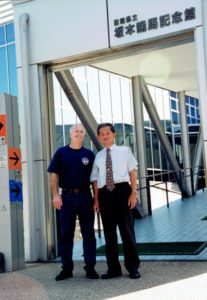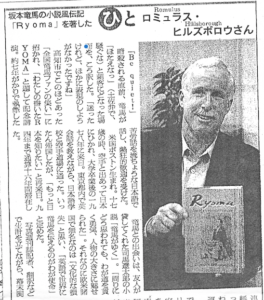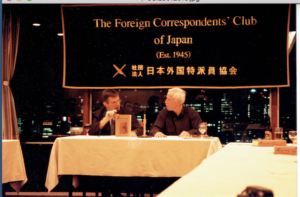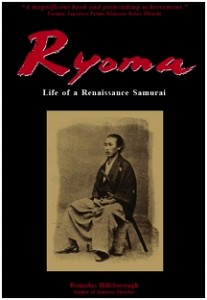
I mentioned in yesterday’s post that I had the honor of speaking at the 11th annual national gathering of “Ryoma fans” (全国龍馬ファンの集い高知大会) in Kochi in October 1999, the year Ryoma was published. That was when I first met my very good friend Mr. Kunitake Hashimoto, chairman of the national organization that oversees all of the nearly 200 (I’ve lost count) “Ryoma Societies” around Japan. (This photo of Mr. Hashimoto and me, at the Sakamoto Ryoma Memorial Museum, was taken at that time.) I owe a debt of gratitude to Mr. Hashimoto for his friendship and support throughout these many years.
On the night of the event in Kochi, I attended the banquet on the beach at Katsurahama, near the famous statue of Sakamoto Ryoma. I talked to a reporter from the national newspaper Asahi Shinbun. The article was published on November 10, 1999.






